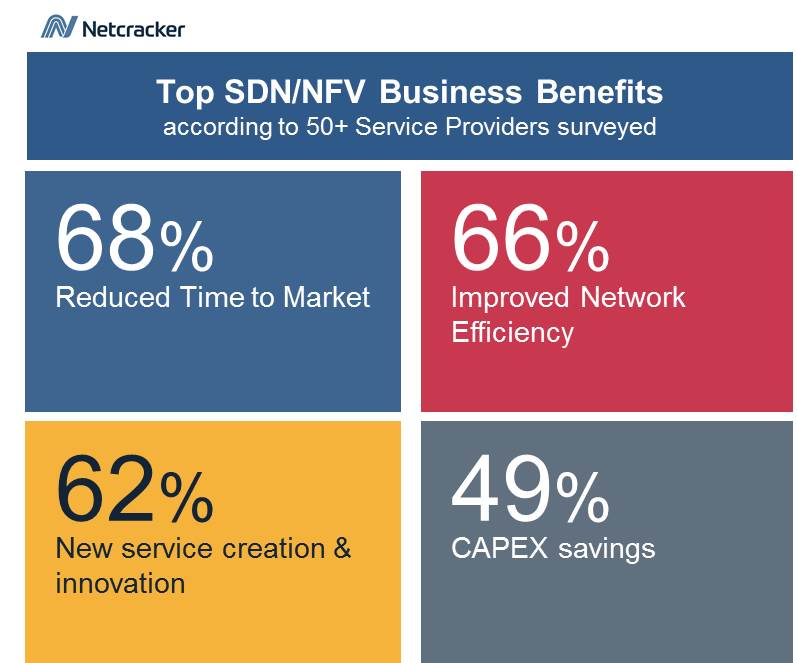Three Essentials to Commercializing Partner Communities
Effective partnerships require more than simply signing along the dotted line.
As service providers adopt new SDN and NFV technologies, they are quickly recognizing that a virtualized network function (VNF) on a generic IT box is not a market-ready service. Many of the functions provided by purpose-built network gear are coded in software as VNFs, which are then loaded onto generic IT hardware as new products meant to enable new virtualized networks and services.
This process reflects a principle philosophy used to identify software-defined networking (SDN) and network functions virtualization (NFV). The good news for service providers is that there are many new and innovative VNFs to choose from. However, SDN and NFV partner communities sometimes complicate the process by offering raw VNFs, rather than delivering fully commercialized services that can be monetized right away.
1. Commitment to Delivering Complete Services
Technology providers are building partner communities around their core offerings to channel new VNFs into service provider environments. Yet, they often provide technical widgets that are not market-ready.
These widgets do not help service providers commercialize new SDN- or NFV-based offerings any faster and their use can create unforeseen problems. Service providers instead need strategic partnerships that deliver a strong selection of fully commercialized VNFs that are market-ready on day one.
Whether a partner community is focused on solving this problem depends, in large part, on the depth of its commitment to collaboration among its partners and how robust its onboarding process is. It’s generally not a good sign if a partner community's onboarding process involves little more than signing some paperwork and a cursory check to make sure one vendor’s controller is roughly compatible with VNFs from other partners.
From a business perspective, partnerships need to extend beyond basic revenue sharing agreements. The partner community owner must provide a strong framework that enables it to harmonize commercial terms with all partners and end customers. An effective and unified licensing framework is a critical asset the strategic partner community owner should provide for its customers and partners, as it accelerates commercial development across the entire service chain and offers a single point of reference for license management.
2. Results-driven Onboarding
According to market data collected by European Communications on Netcracker’s behalf, nearly 70 percent of service providers (see figure) view reduced time-to-market as the primary benefit of leveraging SDN and NFV. The survey also revealed that 77 percent believe launching new enterprise services takes less than three months with SDN and NFV, while 25 percent said it requires less than a week. These rising expectations mean vendors need to ensure their technologies are market-ready upon delivery. A proper onboarding process is necessary to meet this mandate.

Consider the requirements any service provider goes through to introduce a new service. Before being brought to market, new offerings must meet strict quality, security, regulatory, scale and even interoperability requirements. Therefore, the VNF onboarding process should span qualification, testing, integration, cataloging, marketing and deployment to satisfy these requirements. It’s not enough for partner technology to be interoperable; partners must be able to deliver market-ready services and sustain them throughout their lifecycles.
3. Built Around Hybrid Orchestration
The need for multivendor, multidomain and hybrid network and service orchestration capabilities is often overlooked amid close focus on VNFs. Service providers are well aware of hybrid orchestration's importance, as 91 percent believe that seamless orchestration for hybrid environments is critical or very important to the commercial success of SDN and NFV, according to Netcracker's survey.
An optimal VNF onboarding process enables seamless integration with world-class orchestration capabilities that span vendors, network layers and domains across both legacy and virtualized network environments. This ensures that service providers can bring new sets of services to market that are based on both VNFs and traditional telecom components and which can operate as networks incrementally transition from traditional to virtualized technologies.
Ultimately, there is a substantial difference between a partnership on paper and a community of market-ready, partner-based services. A truly valuable partner community focuses on helping service providers take the risk out of virtualization and achieve goals such as increasing innovation, improving end-to-end service experiences, accelerating time-to-market and reducing operational costs, all without increasing the risk of adopting new technologies like SDN and NFV.
Click here for more information regarding NEC/Netcracker SDN/NFV Solutions.